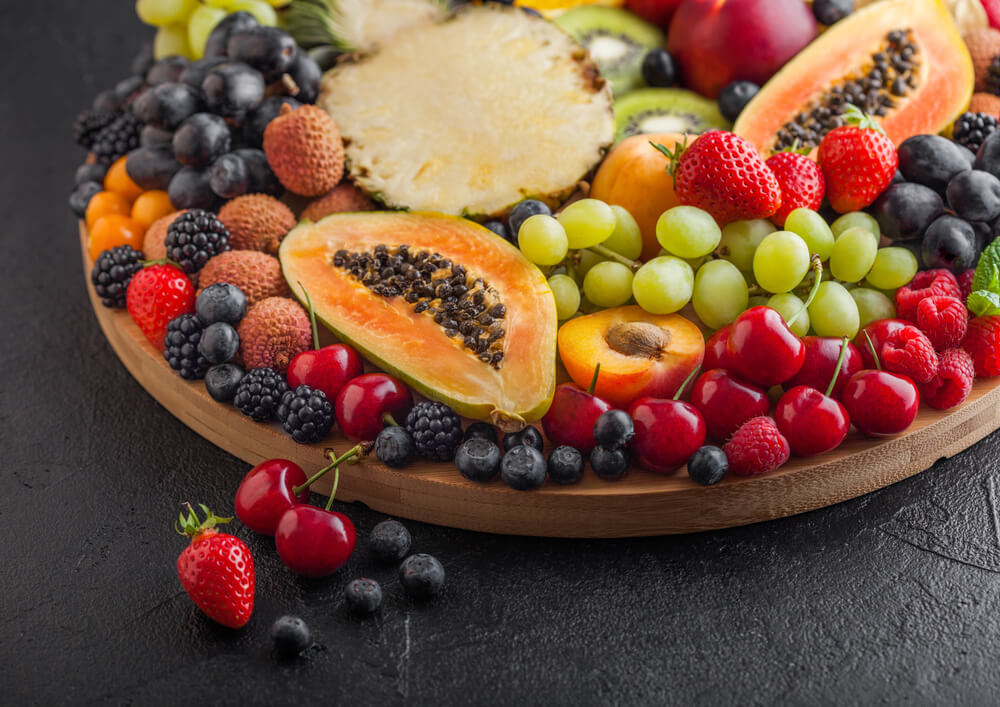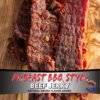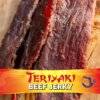Meat a Source of Proteins of High Biological Value
Meat is an important source of proteins of high biological value. Within the vitamins and proteins of meat, it provides a greater proportion of vitamins such as B6 and B12, in addition to vitamin A. It also has small amounts of other vitamins such as vitamin E, pantothenic acid, and biotin.
Meat is an excellent natural source of highly bioavailable iron and zinc.
What Vitamins and Nutrients Does Meat Have?
In terms of fat content, meat and derivatives are classified as:
- Lean (<6 grams of fat per 100 g of food)
- Semigrasses (6-12 grams of fat per 100 g of food)
- Fats (>12 grams of fat per 100 g of food)
The color of meat is a consequence of a protein that contains iron, called “myoglobin”. Red meats (veal, pork, lamb, or horse…) have more iron content. White meats are those of poultry (chicken or turkey), although it also includes rabbit meat, a mammal. Lamb and pork are classified according to age, feeding, and when the animal is adult, according to the cut.
Poultry meat has the same protein value as beef and pork. What differentiates them is the proportion of fat, which varies between 4%-25%. Highlights the content of vitamins of group B, such as B1 (thiamine) and B3 (niacin).
Sausages and Cold Meats, High Caloric Content
Sausages represent a simple and fast alternative for consumption (snacks between meals, quick dinners when there is no time…). The health problem occurs when they are not consumed occasionally. There is no problem in consuming a serving of cold cuts on any given day of the week if our diet, in general, is high in fruits, vegetables, legumes, or whole grains.
The cold cut is usually made mainly from fatty meat of animal origin, viscera, blood, salt, and various spices. Those with the most fat are: salami, chistorra, blood sausage, chorizo , or mortadella, and those with the least fat are: cooked ham, loin sausage, or cured ham.
Its excessive consumption is not advisable, not only because of its fat but also because of its high salt content. This can raise blood pressure and cholesterol and affect our cardiovascular system in the long term.
There is no defined recommended intake for sausages nor an optimal amount we can consume.
Fish, Important Source of Nutrients
It is a food with a nutritional value similar to meat. It provides between 18%-20% of proteins of high biological value. The fish’s proteins are rich in minerals such as phosphorus, iodine, calcium, and vitamins such as thiamin and riboflavin.
Fish Nutrients
Various studies support the advantages of consuming oily fish (sardines, mackerel, tuna, bonito, swordfish, salmon, herring, anchovies, and horse mackerel…) to prevent cardiovascular diseases. Fish is an important source of Omega 3 fatty acids, which reduce LDL (‘bad’) cholesterol levels and slow down the accumulation of fatty plaque in the arteries.
The best-known classification is made by fat content; they are classified as:
- Blue or fatty: Those with a lipid content greater than 10% (elver, emperor, tuna, salmon, etc.).
- Lean or white: Those with a fat content of less than 5% (whiting, hake, sole, monkfish, cod, rooster, etc.).
Fish intake is essential for both children and adults. However, the Agency for Food Safety warned about the risk of consuming some species due to their high mercury content. Specifically, this warning refers to swordfish, sharks, bluefin tuna, and pike.
Seafood, A Special Mention
We have already discussed fish and its benefits, but shellfish deserve a separate chapter since they have particularities regarding nutrients.
They are classified into two groups:
- Crustaceans: They stand out for their low amount of fat, such as spider crab, lobster, crab, shrimp, lobster, Norway lobster, etc.
- Mollusks: They have less cholesterol, such as clams, oysters, mussels, cockles, etc.
As a food of animal origin, shellfish offer high-quality protein, containing all the essential amino acids. They are low in carbohydrates, and most have a low-fat content, not reaching 2% of their composition. However, many have high cholesterol, such as baby squid, mussels, or prawns.
Among the seafood vitamins in their composition, vitamin E and B vitamins stand out, among which folic acid deserves a special mention, essential in the diet of pregnant women, and also to prevent nutritional anemia. We also find vitamin A in most shellfish.
Among the minerals in shellfish, its potassium, sodium, iodine, and magnesium content stands out. Although in some specimens, the iron content is especially important, as in clams, cockles, mussels, and calcium content, as is the case of baby squid or prawns.
Beef Jerky A Source of Vitamins and Minerals
Beef jerky is a high-energy snack that can be a superfood after a vigorous workout or intense exercise. This snack packs a hefty dose of protein; it also provides certain key vitamins and minerals.
Meats, in general, are an excellent low-calorie source of protein, omega-3s, anemia-fighting iron, energy-boosting vitamin B12, and even choline (the vitamin that can help give you a more defined waistline).
Among all the wonders of dried meat, the one from Double G Jerky: is natural, made with the highest quality meat, and keeps all its nutrients intact during dehydration.
Beef jerky has several complete proteins, which contain the following benefits:
Calories and Fat
In short, a 50-gram serving of beef jerky contains less than 5% total fat and less than 8.3% saturated fat. Beef jerky also contains heart-healthy monounsaturated fats.
Iron and Zinc
Meat, including beef jerky, provides a healthy dose of iron and zinc, two essential minerals that help support the immune system. Iron stimulates the proper production of red blood cells, and zinc helps your body heal wounds.
Sodium
One nutritional drawback to beef jerky is a large amount of sodium added to help preserve the meat, extend its shelf life, and enhance flavor.
Conclusion
Experts say that older animals and fibrous cuts (such as cheeks or shanks) contain a higher proportion of collagen, making them tougher meats. This type of meat needs a longer cooking process (expansion), which allows the transformation of collagen into gelatin and, therefore, the softening of the meat.
Young meats and leaner cuts such as loin or sirloin contain less collagen and fat, so they benefit from concentration techniques that apply a high temperature for a short time, avoiding excessive coagulation of proteins and maintaining their juiciness.
Eating too much meat negatively impacts your health, but this does not mean you have to exclude it from your diet. We recommend that you first consult a nutritionist before starting to add meat to your diet plan so that they can establish balanced and appropriate guidelines for you.










